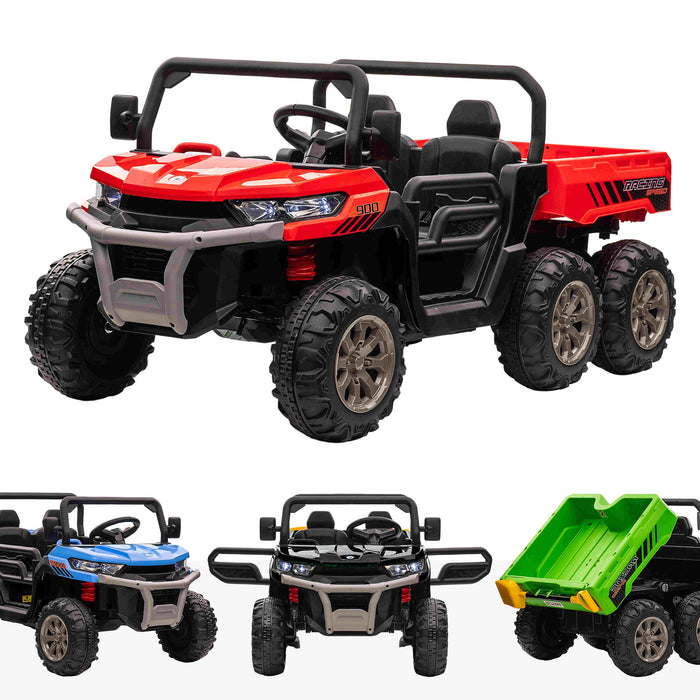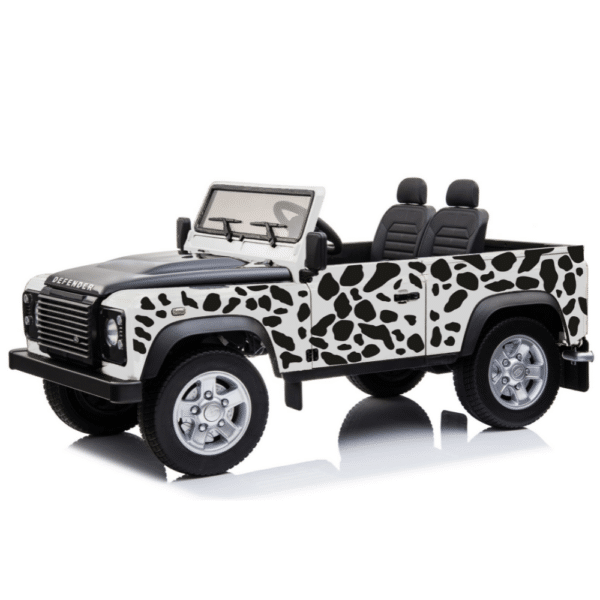New Facts On Deciding On Kids Ride On Cars
Wiki Article
What Do I Need To Be Aware Of About The Battery Life And Charging Time Of An Electric Ride-On Kids Car?
Understanding the battery life and charging times of an electric ride-on kids car is crucial to the safety of your children and optimum performance. Here's what you should know - Battery Type -
The majority of electric ride-on cars for kids are powered by rechargeable batteries. They are either Lithium-ion or lead-acid. Lead-acid batteries are slower to charge and have a shorter battery life.
Capacity of Battery
The size of the battery and capacity, expressed in amperehours (Ah) or watthours(Wh) will determine the amount of time a vehicle can run on a single charge. High capacity batteries allow for longer playtime without requiring recharge.
Run Time -
The run time is the longest duration of continuous operation an electric vehicle can achieve with one charge. It can differ based on factors such as the capacity of the battery, motor power, terrain, and weight of the person riding.
The average run time of electric ride-ons varies between 30 to 2 hours. However, some batteries that have high capacity may have longer durations.
Time to Charge -
Charging time refers to the amount of time required for a battery to be fully recharged after it has been exhausted. The charging time may differ based upon battery capacity or charger specifications.
In general, the charging time for an electric ride-on car is between 8 to 12 hours. Certain models provide faster charging and charging times, particularly models that utilize lithium-ion batteries.
To ensure the safety of your family and prolong battery life, it's essential to charge the battery according to the instructions of the manufacturer. Incorrect charging or overcharging the battery will impact its performance and longevity.
Charge Methods -
Most electric vehicles have a charging cord which plugs directly into a standard outlet. Some models feature fast charging capacities, or come with a charger that changes the rate of charging depending on the battery's condition.
To ensure that the battery is not damaged or electrical system, ensure that the charger and the port of the ride-on are compatible.
Batteries for Other Use -
Some electric cars allow the purchase of extra or spare batteries. This can extend the playing time. You can replace the old batteries with ones which are fully charged thus minimizing time between sessions.
Knowing the battery life of your electronic kids' ride-on vehicle and its charging times will enable you to ensure that your child enjoys fun and exciting adventures while exploring their world. Battery life can be increased by charging the battery regularly and using proper charging techniques. View the top rated Audi kids car for more info including two seater childrens electric cars, cars pedal car, childrens ride on, race car toy, childs ride on car, childs ride on car, toy toy cars, toy with car, riding digger, toy and car and more. .

How Are Models For Outdoor And Indoor Kids Cars Designed?
These models have been designed with features and characteristics that are specific to the particular environment and the use situation, whether either outdoors or indoors. These are the main differentiators between these models Indoor Use Cars
Size and Weight Cars made for indoor use are typically smaller and lighter in weight to maneuver easily within confined spaces like playrooms, living spaces or hallways. They are compact enough to fit through narrow spaces and corners without causing damage to walls or furniture.
Low Ground Clearance - Indoor use vehicles have a low clearance, which prevents them from getting stuck or getting caught up on obstructions such as rugs, carpets, or thresholds. This allows for smooth, free motion on indoor surfaces.
Smooth Wheels. The wheels used in cars for indoor use are made of materials like rubber or plastic for grip. They are designed to reduce noise and avoid scratching indoor surfaces.
Limit Speed - Vehicles designed for indoor use usually have smaller maximum speeds to guarantee that they are safe and controlled in tight spaces. This prevents collisions and accidents with furniture like walls or other obstacles that are found within.
Outdoor Use Cars -
Durable Construction - Cars that are built for outdoor use are constructed with robust materials. They can be constructed of tough metal or plastic to withstand elements of the outdoors like temperatures, sunlight, moisture changes and rough handling. They are less susceptible to wear and tear resulting from exposure to the elements.
The greater the clearance on the ground is, the better equipped they are to deal with bumps and uneven terrain. This allows cars to move over rough surfaces without damage or a snag.
Traction tires - Tires designed for outdoor vehicles usually come with treads and patterns that provide greater grip and traction when driving on uneven or slippery surfaces. This ensures stability and control over surfaces outdoors, preventing sliding or skidding.
Weather Resistant: Cars designed for outdoor use usually have features that are weatherproof, like sealed electronics, or casings with waterproof coatings. They may also use the rust-resistant materials to avoid damage caused by moisture. This permits the vehicle to be exposed to mud, rain or puddles and still be able to perform.
High-Speed - Vehicles designed for outdoor use have greater speeds due to their design to handle the open spaces and long distances encountered in the natural world. Children can experience a more exciting and thrilling ride.
These design features and characteristics can help parents select the ideal car for their kids to meet their requirements for use and their environment. Check out the most popular JCB ride on toys for blog advice including childrens digger, toy car, digger ride, electric ride along car, ride on digger, electric two seater cars, electric ride on, toy a car, ride on car, toy and car and more. .

What Is The Most Reliable Remote Control Car For Kids? What Are The Pros And Cons Of These Cars?
Remote control vehicles for children, also called RC or remote-controlled vehicles, are available in a range of styles, sizes and price points. They're designed to fit the needs of different budgets and tastes. This article provides an overview of the types sizes, styles and prices of children's remote controlled cars as well as their pros and cons.
Electric RC Cars – Remote-controlled vehicles powered by batteries that are suitable for use indoors or outdoors. There are a variety of designs of RC vehicles like buggies, trucks and sportscars.
Nitro RC Cars – Gas powered remote controlled vehicles that have better performance but require greater maintenance. They're generally bigger and more expensive than an electric RC cars.
Scale Models - Remotely controlled replicas of real-life vehicles such as trucks, cars, airplanes, and boats. Scale models can be found in a variety of scales, from 1-10 to 1-24. The larger scales have more details and authenticity.
Sizes -
Remote-controlled children's cars are available in a range of sizes, ranging from tiny miniature models to huge-scale replicas. The size of the car can influence the performance of a vehicle as well as its speed and the handling characteristics.
Micro-sized car are lightweight and compact. They're ideal for young children and indoor use. The larger models offer greater performance and endurance, making them ideal for off-roading or racing.
Prices
The cost of remote-controlled cars for children may vary based on characteristics, features, and brands as well as the quality.
Small electric and nitro powered cars for RC are available in sizes ranging from $20 up to $100.
Models and high-end hobbies RC cars cost from several hundred to more than a 1000 dollars, depending upon the level of detail.
Pros and Cons -
Pros -
Remote Control Children's Cars - These cars are perfect for entertainment. They are able to be used by both children and adults.
Skills Development Utilizing an RC vehicle assists in developing hand-eye coordination, spatial awareness and problem solving skills.
Social Interaction - RC cars can be enjoyed by family and friends, and encourage interactions and socialization.
Customization – A lot of RC cars can be customized using aftermarket modifications parts and accessories that enhance the performance and appearance.
Cons
Costs - Quality remote control children's vehicles can be costly, especially hobby-grade models with sophisticated features.
Learning Curve - Controlling an RC car requires practice and expertise, and smaller children may struggle with the controls initially.
Maintenance Regular maintenance is essential for RC cars, such as cleaning, lubrication and repairs.
Safety Concerns Safety Issues RC vehicles are prone to danger when they are not used responsibly under adult supervision. They may create accidents, fall hazards and electrical hazards.
The best remote control children cars offer an educational and exciting experience to children of all different ages. When choosing the right model for your child but you should consider several factors, including dimensions, features for price, and security. The RCs that are designed for hobby use may be ideal for more advanced kids and those who love to drive while more basic models are suitable for younger children and beginners. View the best Mercedes kids car kidscars.co.uk news for site recommendations including cars pedal car, a toy car, toy car, kidscars, toy ride, ride ons, toy car, 2 seater electric cars, electric two seater cars, electric ride on and more. .
